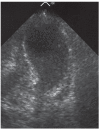Heart Disease in Disorders of Muscle, Neuromuscular Transmission, and the Nerves
- PMID: 27014341
- PMCID: PMC4805555
- DOI: 10.4070/kcj.2016.46.2.117
Heart Disease in Disorders of Muscle, Neuromuscular Transmission, and the Nerves
Abstract
Little is known regarding cardiac involvement (CI) by neuromuscular disorders (NMDs). The purpose of this review is to summarise and discuss the major findings concerning the types, frequency, and severity of cardiac disorders in NMDs as well as their diagnosis, treatment, and overall outcome. CI in NMDs is characterized by pathologic involvement of the myocardium or cardiac conduction system. Less commonly, additional critical anatomic structures, such as the valves, coronary arteries, endocardium, pericardium, and even the aortic root may be involved. Involvement of the myocardium manifests most frequently as hypertrophic or dilated cardiomyopathy and less frequently as restrictive cardiomyopathy, non-compaction, arrhythmogenic right-ventricular dysplasia, or Takotsubo-syndrome. Cardiac conduction defects and supraventricular and ventricular arrhythmias are common cardiac manifestations of NMDs. Arrhythmias may evolve into life-threatening ventricular tachycardias, asystole, or even sudden cardiac death. CI is common and carries great prognostic significance on the outcome of dystrophinopathies, laminopathies, desminopathies, nemaline myopathy, myotonias, metabolic myopathies, Danon disease, and Barth-syndrome. The diagnosis and treatment of CI in NMDs follows established guidelines for the management of cardiac disease, but cardiotoxic medications should be avoided. CI in NMDs is relatively common and requires complete work-up following the establishment of a neurological diagnosis. Appropriate cardiac treatment significantly improves the overall long-term outcome of NMDs.
Keywords: Cardiac arrhythmias; Cardiomyopathies; Muscular diseases; Neuromuscular disease.
Conflict of interest statement
The authors have no financial conflicts of interest.
Figures





Similar articles
-
Primary myopathies and the heart.Scand Cardiovasc J. 2008 Feb;42(1):9-24. doi: 10.1080/14017430701854953. Scand Cardiovasc J. 2008. PMID: 18273731 Review.
-
Myocardial and Arrhythmic Spectrum of Neuromuscular Disorders in Children.Biomolecules. 2021 Oct 25;11(11):1578. doi: 10.3390/biom11111578. Biomolecules. 2021. PMID: 34827576 Free PMC article. Review.
-
Unclassified cardiomyopathies in neuromuscular disorders.Wien Med Wochenschr. 2013 Nov;163(21-22):505-13. doi: 10.1007/s10354-013-0243-z. Epub 2013 Oct 24. Wien Med Wochenschr. 2013. PMID: 24154801 Review.
-
Cardiomyopathy in neurological disorders.Cardiovasc Pathol. 2013 Sep-Oct;22(5):389-400. doi: 10.1016/j.carpath.2012.12.008. Epub 2013 Feb 22. Cardiovasc Pathol. 2013. PMID: 23433859 Review.
-
Sudden cardiac death in neuromuscular disorders.Int J Cardiol. 2016 Jan 15;203:508-15. doi: 10.1016/j.ijcard.2015.10.176. Epub 2015 Oct 28. Int J Cardiol. 2016. PMID: 26551884 Review.
Cited by
-
Exercise in neuromuscular disorders: a promising intervention.Acta Myol. 2019 Dec 1;38(4):207-214. eCollection 2019 Dec. Acta Myol. 2019. PMID: 31970319 Free PMC article. Review.
-
Multimodality Imaging in Arrhythmogenic Left Ventricular Cardiomyopathy.J Clin Med. 2023 Feb 16;12(4):1568. doi: 10.3390/jcm12041568. J Clin Med. 2023. PMID: 36836107 Free PMC article. Review.
-
Cardiopulmonary Recovery After Maximal Exercise in Individuals with Neuromuscular Disease and Limited Mobility.J Clin Med. 2025 Jun 12;14(12):4190. doi: 10.3390/jcm14124190. J Clin Med. 2025. PMID: 40565934 Free PMC article.
-
Progressive myocardial injury in myotonic dystrophy type II and facioscapulohumeral muscular dystrophy 1: a cardiovascular magnetic resonance follow-up study.J Cardiovasc Magn Reson. 2021 Nov 8;23(1):130. doi: 10.1186/s12968-021-00812-6. J Cardiovasc Magn Reson. 2021. PMID: 34743704 Free PMC article.
-
Non-compaction cardiomyopathy, Becker muscular dystrophy, neuropathy and recurrent syncope.BMJ Case Rep. 2021 Nov 11;14(11):e244745. doi: 10.1136/bcr-2021-244745. BMJ Case Rep. 2021. PMID: 34764091 Free PMC article.
References
-
- Rubin HJ, Lowbeer L. Progressive muscular dystrophy with involvement of heart muscle. Proc Staff Meet Tulsa Okla Hillcrest Meml Hosp. 1947;4:141–156. - PubMed
-
- Coelho E. Heart changes in the familial type of paramyloidosis with peripheral neuropathy. Z Kreislaufforsch. 1963;52:1066–1078. - PubMed
-
- Hertzman PA, Maddoux GL, Sternberg EM, et al. Repeated coronary artery spasm in a young woman with the eosinophilia-myalgia syndrome. JAMA. 1992;267:2932–2934. - PubMed
-
- Rakocević-Stojanović V, Pavlović S, Seferović P, et al. Pathohistological changes in endomyocardial biopsy specimens in patients with myotonic dystrophy. Panminerva Med. 1999;41:27–30. - PubMed
Publication types
LinkOut - more resources
Full Text Sources
Other Literature Sources

